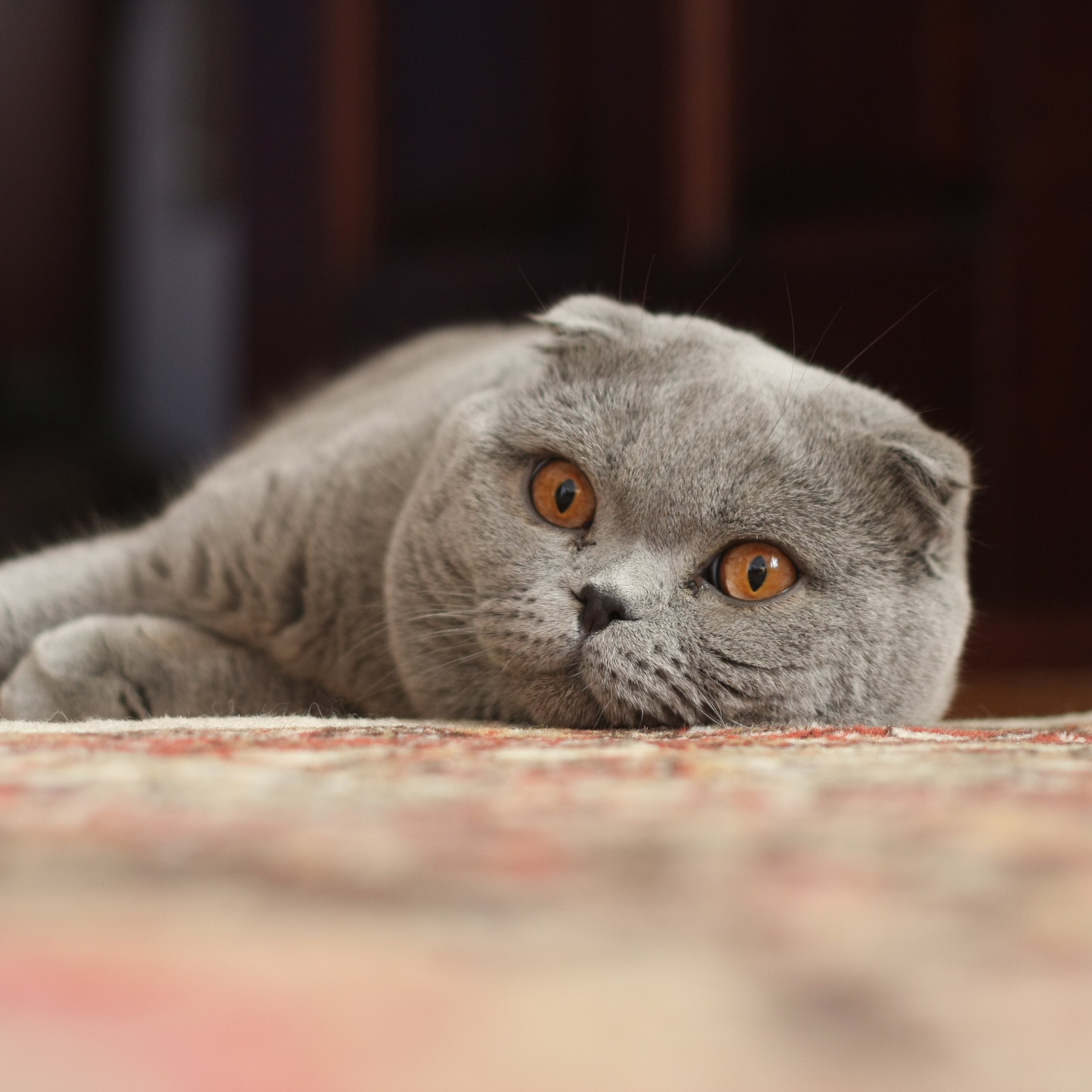
Scottish Fold
The Scottish Fold is a distinctive breed of domestic cat characterised by a natural dominant gene mutation associated with osteochondrodysplasia. This genetic anomaly affects cartilage throughout the body, causing the ears to "fold", bending forward and down towards the front of the head. While this trait contributes to the breed's unique appearance, often described as "owl-like",[1] it has negative effects on the cats' welfare.
"Highland Straight" redirects here. For the long-haired variant of the British Shorthair, see British Longhair. For other uses of "Highland" with regard to cats, see Highland cat (disambiguation).
Originally called lop-eared or lops after the lop-eared rabbit, Scottish Fold became the breed's name in 1966.[1] Depending on registries, longhaired Scottish Folds are varyingly known as Highland Fold, Scottish Fold Longhair, Longhair Fold and Coupari.
All Fold cats are affected by osteochondrodysplasia, a developmental abnormality that affects cartilage and bone development throughout the body. This condition causes the ear fold in the breed and studies point to all Fold cats being affected by it. Fold cats therefore have malformed bone structures and can develop severe painful degenerative joint diseases at an early age.[2] Due to these health conditions, breeding Fold cats is prohibited in several countries and some major cat registries do not recognise the cat breed.
History[edit]
Origin[edit]
The original Scottish Fold was a white barn cat named Susie, who was found at a farm near Coupar Angus in Tayside, Scotland, in 1961. Susie's ears had an unusual fold in their middle, making her resemble an owl. When Susie had kittens, two of them were born with folded ears, and one was acquired by William Ross, a neighbouring farmer and cat-fancier.[3] The breeding programme produced 76 kittens in the first three years – 42 with folded ears and 34 with straight ears. The conclusion from this was that the ear mutation is due to a simple dominant gene.[4]Ross registered the breed with the Governing Council of the Cat Fancy (GCCF) in the United Kingdom in 1966 and started to breed Scottish Fold kittens with the help of geneticist Pat Turner. However by the early 1970s the GCCF stopped registering the cat due to concerns about potential health issues such as ear infections and deafness. In 1970 the first Scottish Fold kittens were introduced to America via a Dr. Neil Todd of Massachusetts who was researching the mutation. Further cats were brought over and the Scottish Fold breeding program continued with American Shorthairs and British Shorthairs being introduced.[5]
Breed recognition[edit]
In 1978 the Cat Fanciers' Association (CFA) granted the breed championship status. In the mid 1980s the long-haired version started to gain recognition.[5]
The Cat Who Went to Paris[edit]
The short novel The Cat Who Went to Paris by Peter Gethers features "the most famous Scottish Fold" according to Grace Sutton of The Cat Fanciers' Association.[1] The book - and the two that followed - document the life of Gethers and his Fold, Norton, from their first meeting to Norton's eventual death and Gethers' experiences after the loss.